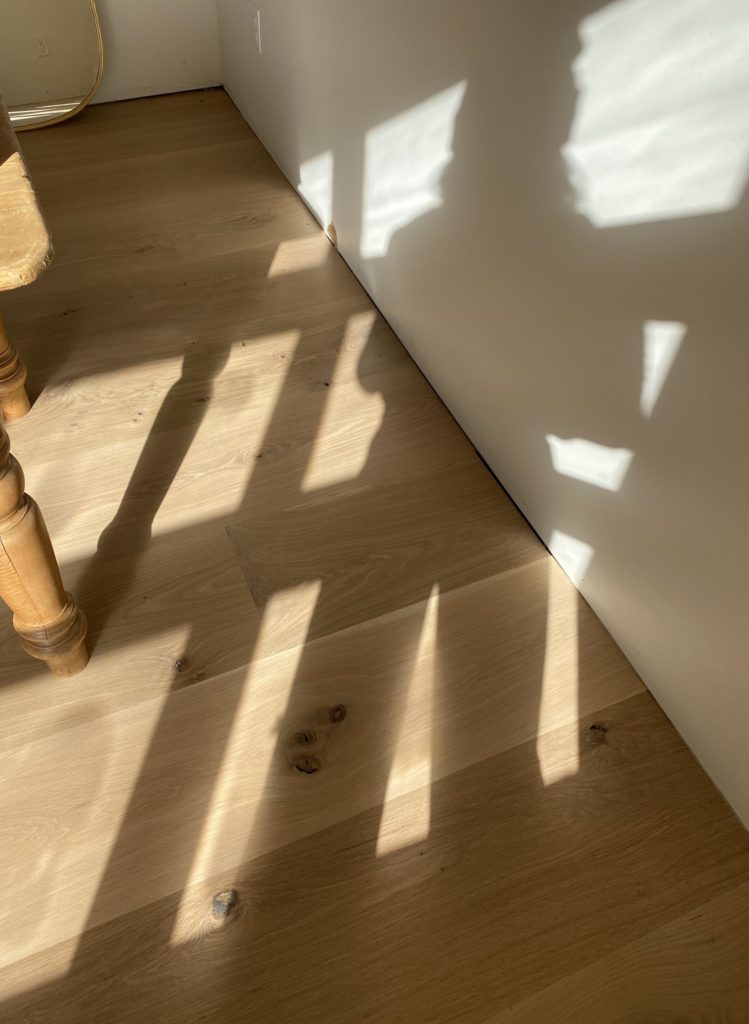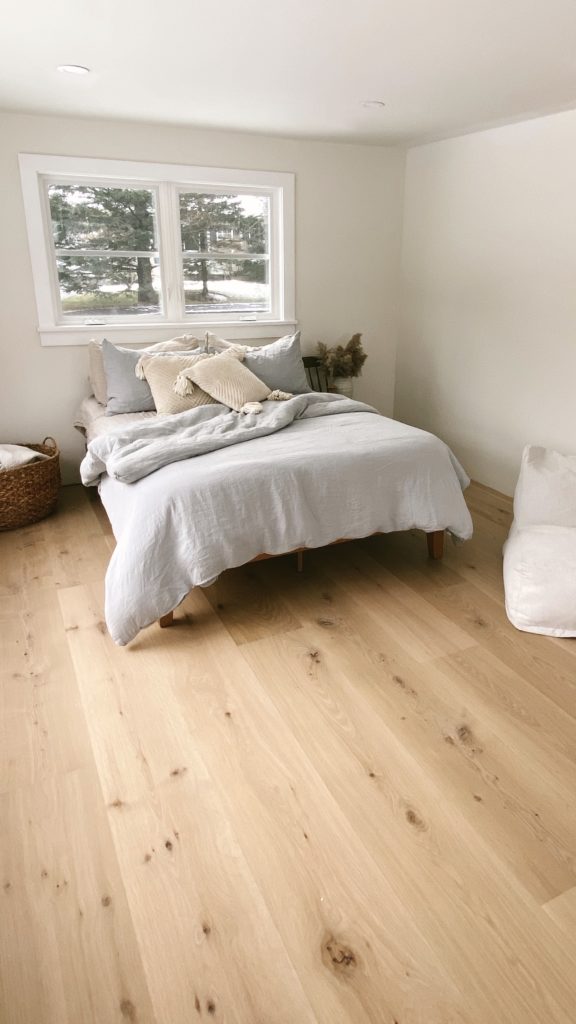One of the biggest decisions to make when restoring a home is: flooring.
Since our home was stripped down to the subfloors when we purchased it, we didn’t have the option of restoring the original floors. That would be the most ideal option. I have seen some gorgeous restorations of original floors – sanding, staining, painting or bleaching the original hardwood so if that’s an option for you – I recommend starting there.
Since restoring original flooring was not an option for us, it was important to me to find an sustainably sourced, eco-friendly flooring option. If you are also starting with a fresh slate & don’t have the option to restore, here are some things to be mindful of when shopping…
THINGS TO CONSIDER WITH SUSTAINABLE FLOORING:
- Material (is it natural? man made?)
- Where it’s sourced from (ethics of deforestation, how far it has to travel to you)
- Life-cycle of the material
- Certifications (like FSC certified, etc)
- How the forest is managed (how trees are cut, are they replanted, etc)
- Age, maturity and rarity of the wood

Before purchasing, do your research to make sure the company is actually reputable & that the product you’re choosing is sustainably created. Some companies are guilty of an unethical and misleading practice called “greenwashing” with logos and certifications. This often looks like a retailer who carries even just one certified sustainable hardwood flooring brand / product that may use that product’s certification logo on their site, giving the impression that ALL of the products they carry are certified sustainable. Definitely dig a little deeper.
Sustainable hardwood flooring means that the production of this product doesn’t detract from environmental, social, economic or public health over its entire life cycle. This includes harvest, production, packaging, use, and disposal. Most flooring products do not meet these standards, while others have fully embraced sustainability.
When I started my search for sustainably-sourced hardwood floors from the U.S. – I was lucky enough to have found Vermont Plank Flooring, a family owned and operated business who share our deep love for the planet and have business practices which honor that.
We rely on earth’s bounty for our products, but for so much more. We believe it is our duty to champion our planet’s health by minimizing our impact however we can, and by working exclusively with forest owners and material suppliers who can be trusted to do the same. It’s simply the right thing to do—for our business, for the quality of our products, for the earth, and for our children and grandchildren.”
– Vermont Plank Flooring
OUR ECO-FRIENDLY FLOORING:
We went with the 12” wide, character grade White Oak
& finished them with Bona Natural high-traffic matte finish.



THE BRAND WE CHOSE & WHY:
Vermont Plank Flooring is FSC certified, their facilities are 100% solar powered and they source their timber exclusively from sustainably managed forests in New England. This accomplishes two things: first that these healthy local forests will continue to thrive and produce timber 50, 100, 200+ years from now, but it also determines in large part the quality of the plank flooring.
Sustainability starts with harvesting. By only harvesting mature trees that would otherwise die on a rotational cycle and leaving younger trees to grow allows forests to regenerate. Harvesting sustainably managed, mature trees also provides the highest quality raw material to mill their flooring, a critical starting point for a spectacular finished product.
When I saw imagery of the wide-plank white oak flooring from Vermont Plank Flooring, I fell in love with the finished product. Learning about the processes of their family-run business completely sealed the deal for me.
Something else to consider when shopping for sustainably crafted flooring is the life-cycle of the material. These floors are made to last generations (often longer than the house), can be resanded and refinished meaning less waste from renewing your flooring (unlike carpeting, which has a lifecycle of 10-15 years).
Vermont Plank Flooring has so many options for eco-friendly flooring, including reclaimed & antique options. If you’d like to learn more about VPF, here’s a helpful blogpost about how to order through them. We are so pleased with how our flooring turned out. It’s gorgeous in every light, durable and we get compliments on it from every visitor.
Lastly, be mindful of the stain / sealant you use on your floors as many can be toxic to humans and pets as well as toxic to our environment. Seek out a product that is non-toxic and low VOC such as the Bona Natural high-traffic matte finish we used.



You stumbled upon this blogpost because you are looking into eco-friendly flooring – if you take away something from this blogpost, let it be this:
- Restore & use reclaimed materials whenever possible
- Seek out a company who harvests from sustainably managed forests & deeply cares about their craft
- Choose hardwood instead of a laminate (read: plastic) as they are durable & will last generations




















Read the Comments +
add A comment